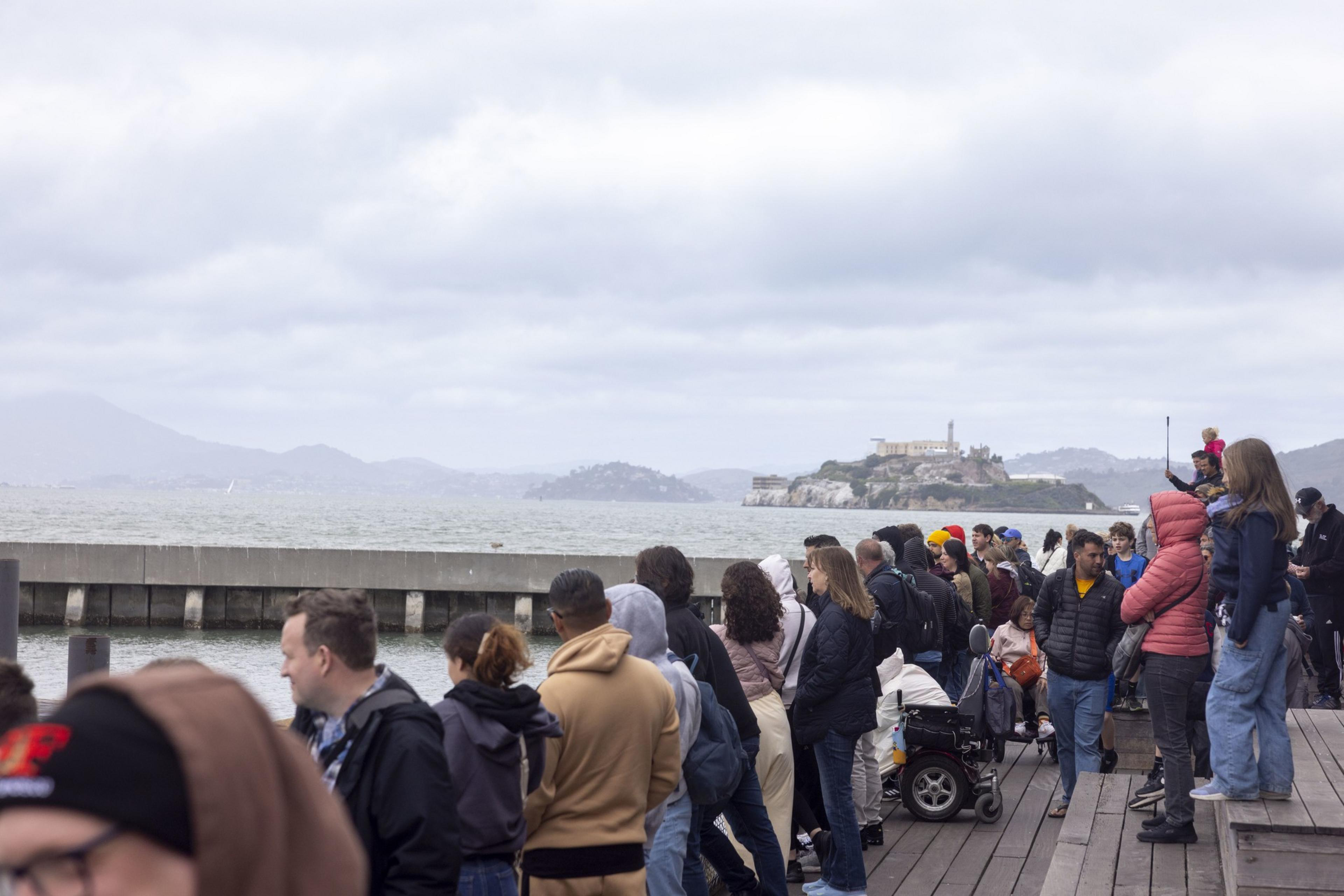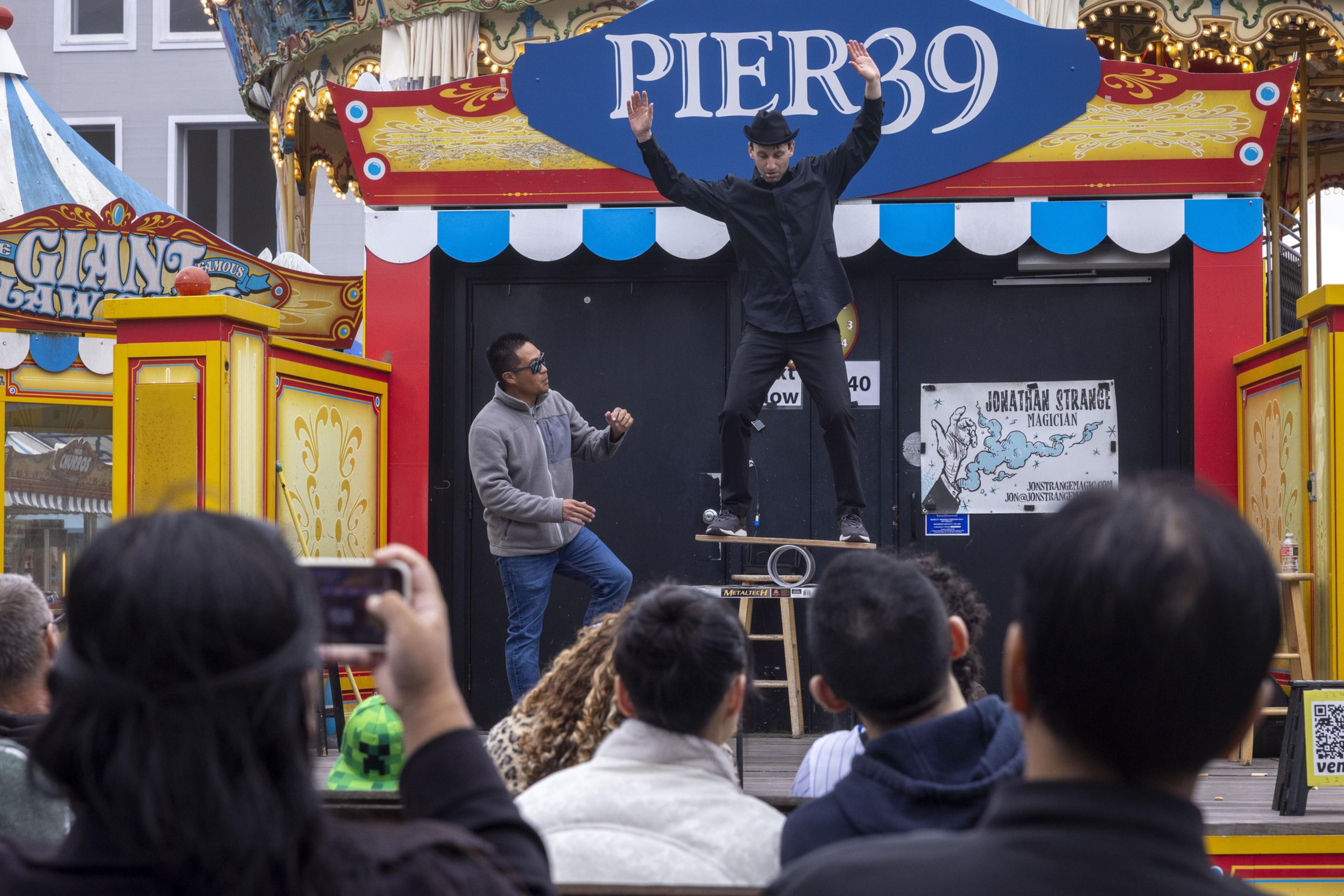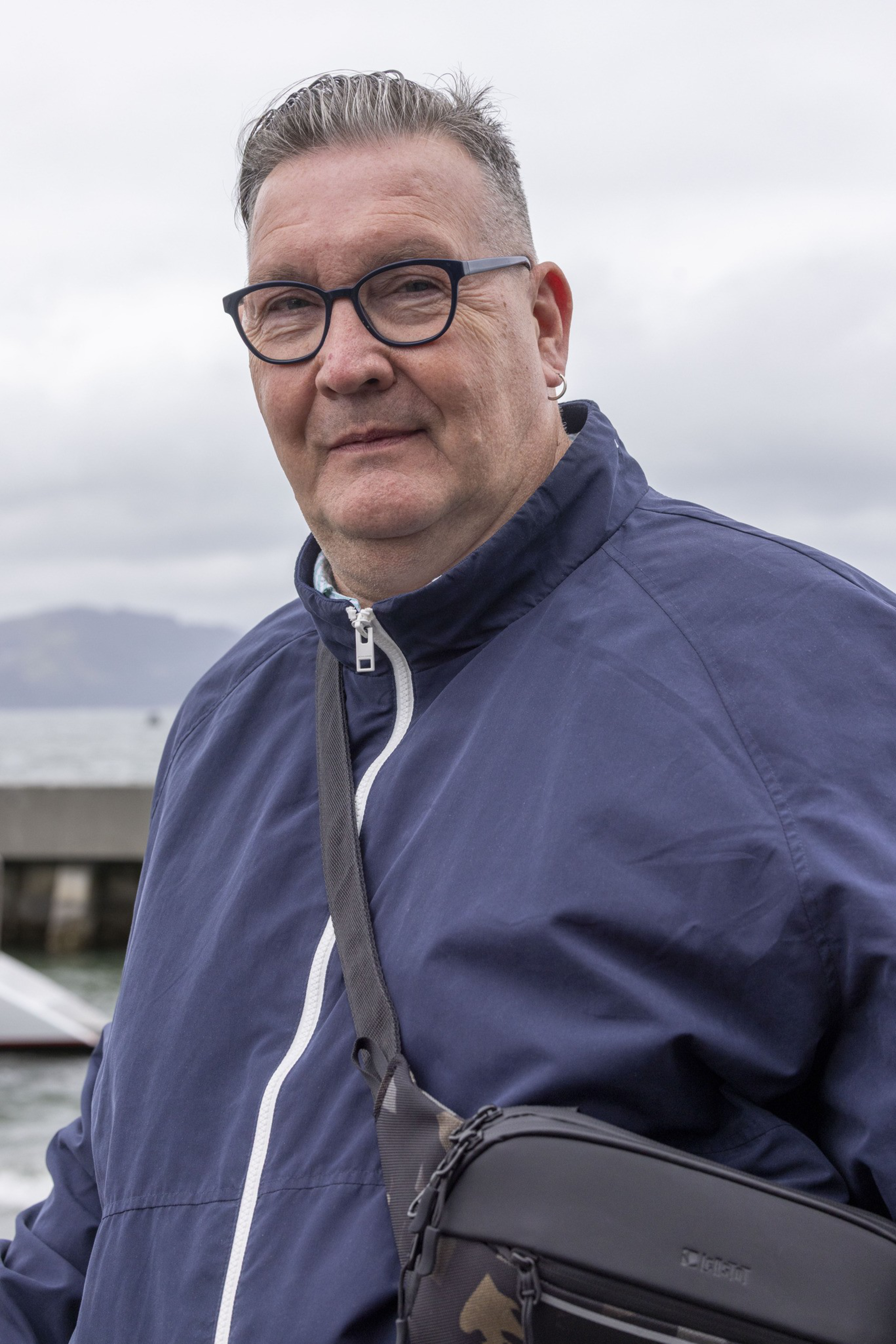Kaitlin Szentes was excited about planning a trip from Austria to San Francisco with her college-age son. She looked forward to tasting the city’s sourdough, exploring its parks, and gazing upon the Golden Gate Bridge in its signature International Orange glory.
She also planned to “spend a lot of money”: on a rental car, meals out, and lodging near the ocean.
But that was before the Trump administration’s crackdown on immigrants soured her taste for the U.S.
“We canceled because Trump’s policy on immigrants was unpleasant,” she said. The flood of stories about European visitors being denied entrance to the U.S. (opens in new tab) or even imprisoned (opens in new tab), despite holding valid travel documents, felt like an assault. “This filled us with a very bad feeling.” Her family opted to travel to Spain instead.
This was meant to be a comeback year for SF’s vital tourism industry. While event and convention traffic (opens in new tab) has proved to be a bright spot so far in 2025, slowing (or declining) rates of international visitors could end up a black eye.

In 2019, a record-breaking year for San Francisco tourism, the city hosted 2.9 million international visitors, according to SF Travel. Though this group represented less than 30% of overnight visitors, it was responsible for more than 60% of spending.
That number plummeted during the pandemic, but by 2024, it had recovered to 2.3 million. Heading into this year, with air travel recovering and major events like the NBA All-Star Game, the figure was projected to be even higher.
Then came Trump’s inauguration and a wave of news that put a chill on travel. A crackdown on immigration and the detention of international tourists has prompted some European countries to issue travel warnings (opens in new tab), while some transgender people have been denied visas (opens in new tab) because of new gender requirements. Meanwhile, the new tariffs and hostility from the U.S. have citizens from Canada and Mexico, among other countries, boycotting American products and travel (opens in new tab).
In February, the number of visitors arriving in San Francisco from Western Europe dropped by more than 6% year-over-year, according to preliminary data from the International Trade Administration. And that was before Vice President JD Vance called Europeans “freeloaders” (opens in new tab) in a Signal group chat and the administration’s tariff policies threw the global economy into chaos.
It’s a worrying sign, particularly as higher numbers of tourists from Europe had made up the gap from the languid recovery of travel from Asia, traditionally a major source of international visitor spending. The number of visitors arriving in San Francisco from Asia in February dropped by 5.5% year-over-year. Overall, overseas visitors coming to San Francisco have dropped nearly 5%.
Call it the Trump slump. The city’s official marketing organization, SF Travel, announced in March that it didn’t expect to see robust growth in leisure travel this year, in part because of “geopolitical issues.” Visit California, the statewide tourism organization, lowered its 2025 visitor spending projections by a whopping $6 billion to $160 billion due to slowing growth in international visitors.

“I think everybody’s kind of holding their breath,” said Anna Marie Presutti, CEO of SF Travel. Because people typically book vacations well in advance, the city hasn’t noticed a plunge in international revelers — yet. “We just don’t know. We haven’t gone down enough of the runway to see what the drag might be on it,” she said. “I imagine that the next month or so is going to be pretty telling.”
‘It’s T-R-U-M-P.’
At Pier 39 on a recent afternoon, as sea lions barked and selfies were snapped in front of the Ferris wheel, a handful of international visitors said that they’d considered calling off their trips but were locked into reservations or nonrefundable deposits
The overcast weather mirrored the less-than-sunny outlook of many tourists who had spent thousands of dollars to come to San Francisco.
“We had already paid for the trip, but if not, I would probably have changed my mind,” said Claudius Cesar, who was visiting from Brazil with his nephew. The anxiety of the border crossing weighed on them ahead of their flight, he said: “Looking at the news, it made me want to change to London or Australia.”
While they concluded that it was “worse on the television” than in reality, they suspect that friends and family back home will choose to vacation somewhere other than the U.S. in the coming months.
Similarly, German tourist Markus Rammenzweig said reports of detentions at the border made him “really afraid to come through the U.S.” He and his travel partners “would have lost a lot of money” if they had canceled, though, so they inspected their devices ahead of potential phone and social media checks (opens in new tab) and took the plunge. “We were very lucky; it was very smooth,” he said. “But we were prepared.”
Meanwhile, Jovita Cardenas played the role of cheerleader/counselor in convincing her 10 friends not to cancel their trip from Mexico over border fears.
A local, she had spent several days jetting her crew around the Bay Area in a rented van, grateful they didn’t bail. She felt lucky that some of her go-to spots for visitors, like the Painted Ladies and Lombard Street, were less crowded than she’d expected during Easter week.
“I’ve never seen it this low with tourists,” she said, before spelling out the suspected cause: “It’s T-R-U-M-P.”

Not everyone has seen the White House’s policies as a deterrent, though. Andy Slaymakeo and Matt Tideswell from the U.K. said Trump’s rhetoric made them more excited for their trip.
“I think a lot of British people feel that the policies that Trump’s brought in, the U.K. should follow,” Tideswell said. “Like freedom of speech and moving away from wokeness. It’s a sort of resetting back to normality, and the base it needs to go back to.”
The number of British, South Korean, and Japanese travelers who landed in San Francisco in February increased slightly between 2024 and 2025, compared with declines in visitors from Germany, India, and China, according to the U.S. International Trade Administration. (The 25% increase in South Korean visitors is likely tied to the slate of flights (opens in new tab) between San Francisco International Airport and Seoul’s Incheon International Airport that Air Premia launched last spring.)
The line from travel industry professionals has generally been: Don’t panic.
San Francisco is a “resilient” city because it gets a mix of leisure and business travellers, according to Doug Yakel, public information officer for SFO. The airport, in fact, expects a 6% increase in visitors from abroad for the fiscal year. (Notably, SFO’s fiscal year concludes at the end of June. Yakel did not provide estimates for the next fiscal year.)
Expectation versus anxiety
Since the election, deep blue, LGBTQ+-friendly San Francisco has reaffirmed itself as diametrically opposed to Trump’s vision for America, taking swings to oppose his agenda in the form of lawsuits, resolutions, and protests.
Beyond celebrating business travel, a strategy San Francisco is leaning on is boosting its reputation as “one of the most welcoming, diverse, and open cities in the country,” said Presutti.
SF Travel plans to roll out an ad campaign in May touting the city as one that accepts and embraces all people. It will start pushing a cheekier slogan, too, Presutti said: “Get the SF out here.”
She insists she hasn’t heard of any negative immigration interactions for tourists at SFO and hopes visitors who do come will reassure their friends and family back home.
“To be fearful, in general, that’s fair,” she said. “But once people have gotten here, they realize very quickly that maybe their anxiety was a little bit overblown.”

Still, fear is a powerful deterrent. On Reddit, a Dutch national asked if it was safe (opens in new tab) to visit SF, Los Angeles, and Las Vegas with their family. While the responses to the post titled “Are we welcome?” were overwhelmingly positive, the poster remained apprehensive.
“I am sure once we are in the U.S. and meet great people we will have a good holiday,” the poster told The Standard. “We booked our holiday 6 months ago. To be fair, if I could choose today, I would go to another country.”
Gloria Sync, a trans woman from England, loves San Francisco so much that she has considered moving here. Sync has spent ample time in the city, including a stint working as a tattoo artist on Haight Street. But recent political events led her to cancel a trip she had scheduled for May.
Even to visit what is considered the country’s queer mecca, Sync doesn’t think it’s worth crossing a federal border as a trans person.
“When I visited last summer, I felt like I’d gone into the future with regards to trans rights,” she said, referencing SFO’s gender-neutral bathrooms and air of acceptance. “But it’s just gone backward. Now I actually feel that even though the U.K. is notoriously transphobic, I would feel safer here than there.”
